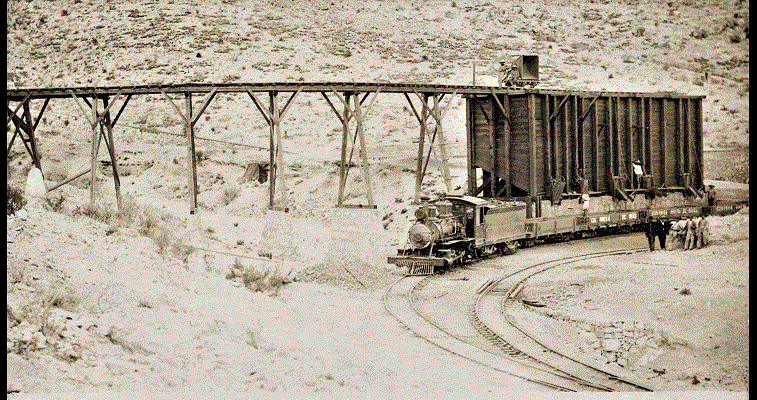



Naica mine, ore loading bridge for railway wagons, 1911

Naica mine, ore loading bridge for railway wagons, 1911

Water is the big challenge for the mine; 60,000 l/min is pumped out to avoid flooding.
The groundwater is 110 m below the adit level: production when
the mine flooded in 2015 was up to 900m below that.
The caves were not seen by modern-era humans until the year 2000.
Miners Pedro & Juan Sanchez — two brothers with
the Peñoles Mining
Company— became the first people to lay eyes on its
crystals when they entered the drying cave on foot. It soon became clear that Crystal Cave was an inhospitable
place:

https://cen.acs.org/physical-chemistry/geochemistry/Naicas-crystal-cave-captivates-chemists/97/i6
Do not attempt to access the
Naica Mine without professional guides & supervision.
Not only does the temperature climb as high as 136
degrees Fahrenheit (58.3 degrees Celsius), but the humidity
levels are close to 100 percent.
The cave is so humid that anyone who enters will have fluids
condense in his or her lungs, which can be fatal.

Geology:
The mine is situated on a structural dome
measuring about 12 km by 7 km.
Country rock is a thickly bedded
Cretaceous limestone.
The ore deposits occur in limestones of
the Finlay, Lagrima and Benigno Formations (Aurora Group, which
is over 1000m thick.
The limestone sequence may be overthickened
by thrust faulting.

Alteration of the limestone is typically
limited to a few centimeters to 8m of recrystallization or
marbelization.
Overlying the Finlay limestones are calcareous
shales of the Benavides Formation and limestones of the Lorna
de Plata Formation.
Some of the smaller caverns can be accessed
without protective equipment:

Hydrothermally altered Tertiary (30.2 Ma) felsites occur as thin discontinuous dikes and sills that localize the ore and cut the limestone.
These coalesce to the west and ultimately merge into a granitic stock west of the historic part of the mine.
Virtually no alteration or mineralization extended through the Benavides, suggesting that it formed an effective seal on the system that caused the orefluids to spread out laterally below it-creating near-surface orebodies with a pattern like the roots of an inverted tree.






http://www.nags.net/stein/2009/3-2009-Lauritzen.pdf
